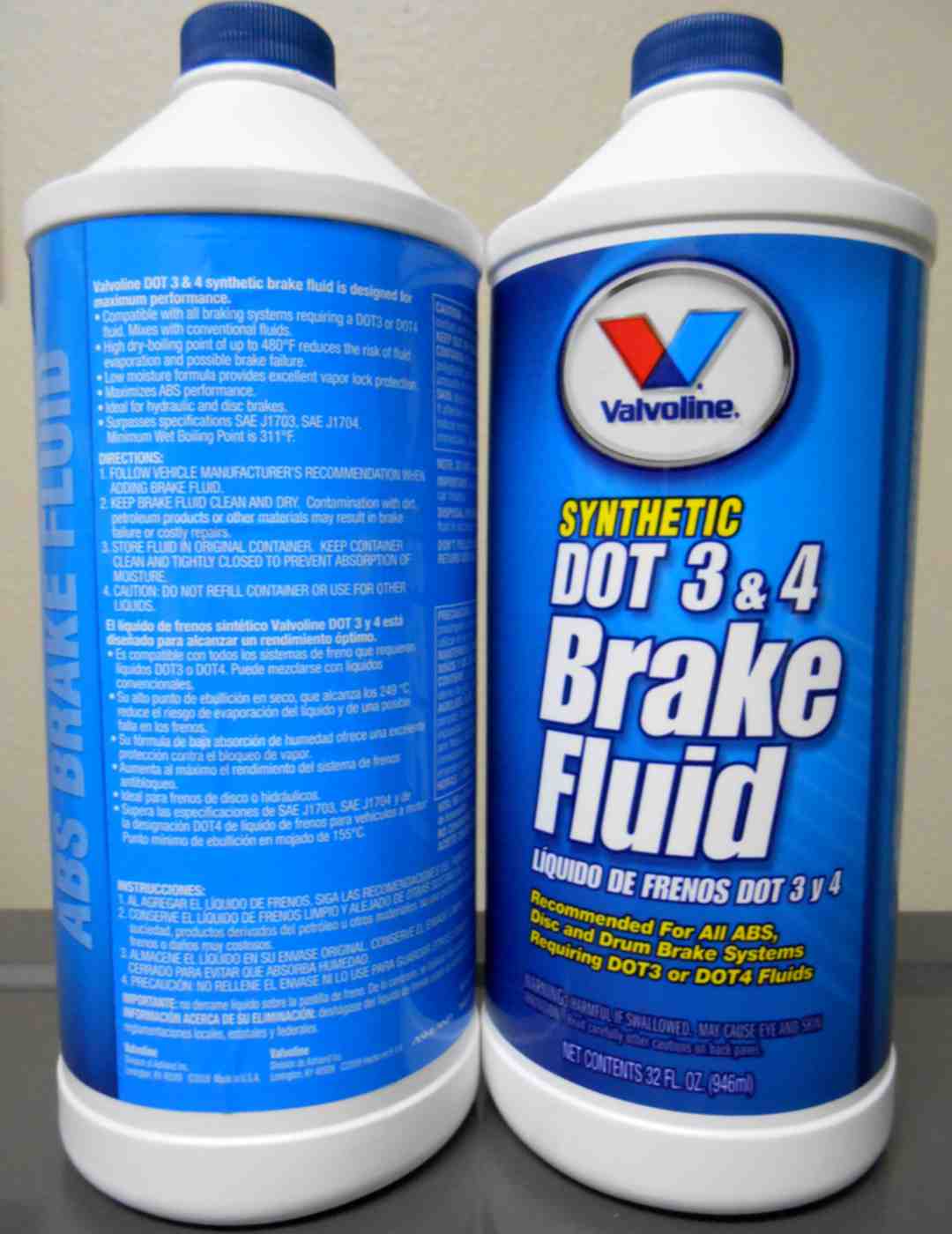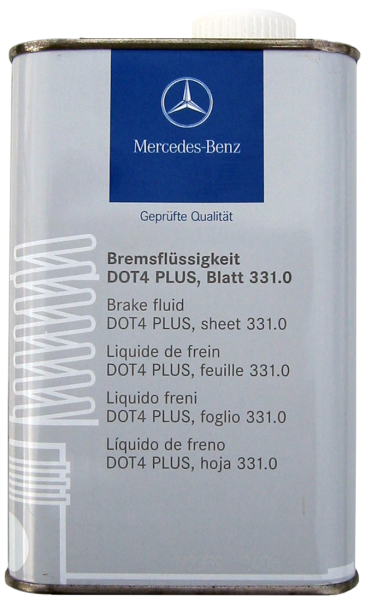
Most modern vehicles have hydraulic brake systems, as opposed to mechanical brake systems found on some bikes and small vehicles. Brake fluid is a hydraulic fluid which transfers force via applied pressure. Clean brake fluid is typically almost water-clear, and in an ideal situation, free from air bubbles that compresses rather than transfer force.
Brake fluid is used instead of cables because it is much easier to build a system with the right balance from front to rear and left to right, and it is less likely to lock up the wheels. It also makes anti-lock braking systems much more feasible and hydraulic forces can easily be given leverage without mechanical levers taking up valuable space.
As brake pads/shoes wear out, they draw in more fluid, so the brake fluid reservoir needs to be topped off every now and then. When the brake pads/shoes are replaced after being worn down quite a bit, there may be surplus brake fluid.

Pictured above right is an example of what brake fluid looks like when bought at an automotive parts store. This example is a synthetic DOT 3/DOT 4 rated brake fluid produced by Valvoline, in the larger 32 fluid ounce containers. Two of these containers are about how much is typically needed to completely replace the brake fluid and have some spare fluid for later fill-ups and/or accidental spills.
To the left is another example, a manufacturer-branded (Mercedes-Benz) metal container of DOT4 brake fluid. Manufacturer-brand bottles/containers/cans contain warranty-spec brake fluid approved for use in the manufacturer's vehicles requiring DOT4 brake fluid.
DOT3 Versus DOT4 Brake Fluid
Brake fluid needs to be changed out periodically as it gathers moisture and contaminants that reduce brake system effectiveness.
Testing Brake Fluid
Brake fluid can be tested with a brake fluid testing tool, which is relatively inexpensive. The tool tests electrical conductivity of the fluid, based on how much water has been absorbed.
Dirt & Air Bubbles
If brake fluid is dirty, it could clog up passages in the system, leading to uneven braking between wheels or problems with the anti-lock braking system.
If the brake fluid has air bubbles in the system, it could reduce braking performance, and often causes a soft/spongey pedal. Air bubbles tend to stay where they are in the line, so they need to be drained out of the system.
DOT Rating
DOT stands for (US) Department of Transportation, and is a government rating system for brake fluid quality, based on wet and dry boiling points.
| DOT Level | Dry Boiling Point | Wet Boiling Point |
| DOT 3 | 205 °C (401 °F) | 140 °C (284 °F) |
| DOT 4 | 230 °C (446 °F) | 155 °C (311 °F) |
| DOT 5 | 260 °C (500 °F) | 180 °C (356 °F) |
| DOT 5.1 | 270 °C (518 °F) | 190 °C (374 °F) |
- AC Delco (General Motors)
- Accel
- Amalie
- Amsoil
- AP Racing
- Ardeca
- ATE
- Bel Ray
- Bosch
- Castle
- Castrol
- Duralast (Autozone)
- EBC
- Forte
- Gard
- Gumout
- Gulf
- Gunk
- Haoshun
- Ipone
- Liqui Moly
- Lucas
- Mag 1
- Motorcraft (Ford)
- Motorex
- Motul
- Peak
- Pennzoil
- Pentosin
- Polaris (Pure)
- Prestone
- Pyroil
- Quaker State
- Randco
- S-Four
- Shell
- STP
- Super Tech (Wal Mart)
- Texaco
- Ussel
- Valvoline
- Wagner (Federal Mogul)
- Wearever (Advance Auto Parts)
- Wilwood
- YAC
- Yamalube
Brands that Sell Brake Fluid
- The Brake Master Cylinder
- Anti-Lock Braking Systems
- Brake Parts Cleaner
